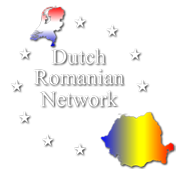Nieuwsbrief 1 mei 2018

DRN NIEUWS
DRN juicht activiteiten van Exportclub Noord van harte toe!
In de Exportclub Noord werken de Friese Exportclub, Exportclub Groningen en Exportclub Drenthe samen op een wijze die identiek is aan het Dutch Romanian  Network(DRN), dus van ondernemers voor ondernemers. Beide organisaties kunnen voor elkaar een toegevoegde waarde hebben. Immers de Exportclub verenigt in de regio internationaal gerichte ondernemers die elkaar met raad en daad bijstaan en voor ondernemers die belangstelling hebben voor Roemenië kan de DRN een helpende hand bieden. Een aantal bedrijven uit de drie noordelijke provincies hebben die mogelijkheid reeds ontdekt, dus is er alle reden om een meer intensievere samenwerking te overwegen.
Network(DRN), dus van ondernemers voor ondernemers. Beide organisaties kunnen voor elkaar een toegevoegde waarde hebben. Immers de Exportclub verenigt in de regio internationaal gerichte ondernemers die elkaar met raad en daad bijstaan en voor ondernemers die belangstelling hebben voor Roemenië kan de DRN een helpende hand bieden. Een aantal bedrijven uit de drie noordelijke provincies hebben die mogelijkheid reeds ontdekt, dus is er alle reden om een meer intensievere samenwerking te overwegen. 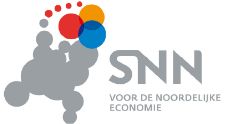 Onlangs tijdens het bezoek van de Roemeense ambassadeur H.E.Brandusa Predescu aan Friesland heeft Reinder Schaap als Special Envoy van de DRN een verkennend gesprek gehad met Greta Jager-Smit voorzitter van de Friese Exportclub. Als voorzitter van de DRN Task Force Agri en Food en voormalige landbouwraad in Roemenië heeft hij in deze zin ook reeds langer contacten met Samenwerkingsverband Noord-Nederland (SNN) die belangstelling tonen voor economisch gerelateerde projecten in Roemenië. Voor meer informatie: https://www.exportclubnoord.nl
Onlangs tijdens het bezoek van de Roemeense ambassadeur H.E.Brandusa Predescu aan Friesland heeft Reinder Schaap als Special Envoy van de DRN een verkennend gesprek gehad met Greta Jager-Smit voorzitter van de Friese Exportclub. Als voorzitter van de DRN Task Force Agri en Food en voormalige landbouwraad in Roemenië heeft hij in deze zin ook reeds langer contacten met Samenwerkingsverband Noord-Nederland (SNN) die belangstelling tonen voor economisch gerelateerde projecten in Roemenië. Voor meer informatie: https://www.exportclubnoord.nl
Logistieke sector
Railvervoer goederen stijgt sneller dan wegvervoer in Roemenië
Het goederenvervoer per spoor noteerde in 2017 een hogere stijging in Roemenië dan het goederenvervoer over de weg, volgens gegevens van het National Statistics Institute INS.
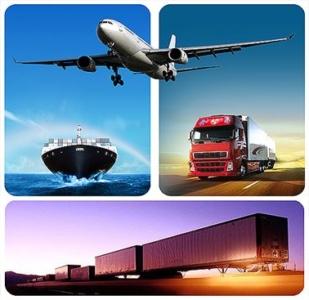 Het goederenvervoer per spoor steeg met 6,6% tot 56 miljoen ton, terwijl het vrachtvervoer over de weg met 4,7% steeg,echter tot een veel hoger volume van 226,3 miljoen ton. Ongeveer 64% van de vrachten over de weg reisde tot 49 kilometer naar hun bestemming.
Het goederenvervoer per spoor steeg met 6,6% tot 56 miljoen ton, terwijl het vrachtvervoer over de weg met 4,7% steeg,echter tot een veel hoger volume van 226,3 miljoen ton. Ongeveer 64% van de vrachten over de weg reisde tot 49 kilometer naar hun bestemming.
Het grootste deel(78,9%) van de met de trein vervoerde vracht ging naar binnenlandse bestemmingen en het vrachtvervoer over de weg naar binnenlandse bestemmingen met een vergelijkbaar percentage van 76,9%.
In 2017 ging ongeveer 45.000 ton vracht per vliegtuig, een groei van 12,2% jaar-op-jaar, naar een meerderheid van internationale bestemmingen. Vracht per schip bedroeg 46 miljoen ton, waarvan de meeste naar internationale bestemmingen, waarbij dit soort vervoer met 0,3% daalde.
Goederen die via de binnenwateren werden vervoerd, bedroegen in 2017 29.043 miljoen ton, waarvan 50,4% nationaal transport. Het volume vervoerde vracht daalde met 4,7% in vergelijking met het voorgaande jaar, terwijl de goederenroute daalde met 4,8%.
Een volume van 6,551 miljoen ton producten werd via oliepijpleidingen vervoerd. In 2017 werd in het nationale wegvervoer 64,1% van het vrachtvolume vervoerd tussen 1 en 49 km, 19,8% tussen 50 en 149 km en 14,1% tussen 150 en 499 km.
In het wegvervoer waren de vrachtdivisies met het hoogste gewicht in de totale vervoerde goederen: metaalertsen en andere mijn- en groevesproducten; turf; uranium en thorium (27,5%) en andere niet-metaalhoudende minerale producten (17,1%).
In het spoorwegvervoer werden belangrijke delen van de totale vervoerde goederen geregistreerd in de kolen- en bruinkooldivisies; ruwe aardolie en aardgas (33,0%) en cokes, geraffineerde aardolieproducten (28,6%) en in de maritieme sector, in landbouw-, jacht- en bosbouwdivisies; vis en andere visserijproducten (35,1%) en steenkool en bruinkool; ruwe aardolie en aardgas (20,2%).
In het nationale vervoer over de weg werd 59,3% van het vrachtvolume vervoerd over afstanden van 150-299 km. Grote aandelen in het totaal van de vervoerde goederen werden genoteerd in de metaalertsen en andere mijnbouw- en groevesegmenten; turf; uranium en thorium (47,1%) en landbouw-, jacht- en bosbouwproducten; vis en andere visserijproducten (28,7%).
Vorig jaar werd in het goederenvervoer over de weg 53,4% van de totale vracht landelijk vervoerd en 53,1% van de totale goederen werd geregistreerd in internationaal vervoer (inclusief vervoer tussen derde landen en kustvaart).
Bij internationaal vrachtvervoer over de weg kwam 94,5% van de totale goederen uit lidstaten van de Europese Unie en 93,3% van alle geladen goederen waren bestemd voor EU-lidstaten. De grootste hoeveelheden goederen waren afkomstig uit Duitsland (23,6%), Hongarije (14,5%) en Italië (12,7%), en wat de scheepvaart betreft, had 21,4% van het goederenvolume als bestemming Duitsland, 16,2% Hongarije en 14,1% Italië.
IT sector
Roemeense IT markt groeide in 2017 met 15 procent
Volgens Euler Hermes(dochteronderneming van Alianz) is de Roemeense markt in 2017 met 15% gegroeid. De groei was in de afgelopen jaren 12,5% in 2014, 14% in 2015 en 9% in 2016. “In reële termen zou de stijging in 2017 aanzienlijk lager zijn als we de decemberinflatie voor non-foodproducten van ongeveer 4 procent over dezelfde periode van het voorgaande jaar beschouwen,” aldus Euler Hermes.
Euler Hermes merkt ook op dat mobiele telefoons de afgelopen jaren de groeicijfers met meer dan 25 procent hebben overtroffen, gevolgd door huishoudelijke apparaten, waar kleine apparaten zijn ingeruild voor grote en elektronische apparaten. Er is ook een tendens om het aandeel van telefoons en laptops in de categorie mediums en premiums te vergroten, dat positieve effecten op de marges heeft.
De markt voor printapparatuur blijft dalen en de IT-sector groeit alleen op het laptopsegment, waarbij consumenten meer kijken naar de maximale pieken.

De concentratie van de retailmarkt is hoog, met Altex en Flanco toonaangevend, gevolgd door Dante International, goed voor ongeveer 60 procent van de totale markt.
Banken hebben ook de afgelopen twee jaar meer belangstelling getoond voor het financieren van behoeften aan circulerend kapitaal, afhankelijk van de stijgende consumptietrend.
Energie Sector
Trafigura heeft focus gericht op Roemeense grondstoffenmarkt
Trafigura is een wereldwijd opererende handelsonderneming, gespecialiseerd in olie, mineralen en metalen.
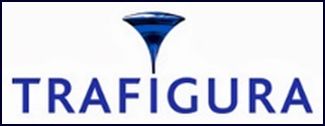 De onderneming heeft 55 kantoren in 36 landen en het hoofdkantoor bevindt zich in Singapore. Het is een van ’s werelds grootste onafhankelijke handelaren in olie en petroleumproducten en toonaangevende handelaar in metaal en mineralen. Hun reputatie is niet geheel vlekkeloos gelet op de rechtszaken in veel landen.
De onderneming heeft 55 kantoren in 36 landen en het hoofdkantoor bevindt zich in Singapore. Het is een van ’s werelds grootste onafhankelijke handelaren in olie en petroleumproducten en toonaangevende handelaar in metaal en mineralen. Hun reputatie is niet geheel vlekkeloos gelet op de rechtszaken in veel landen.
Recent is bekend geworden dat zij van de National Regulatory Authority for Energy (ANRE) een leveringsvergunning van aardgas op de Roemeense grondstoffenmarkt hebben ontvangen. De licentie werd toegekend aan de Roemeense dochteronderneming van de groep, Trafigura Trading SRL, die begin februari jl. werd opgericht.
De in Singapore gevestigde grondstoffenhandelaar toonde in 2013 al belangstelling voor de lokale markt voor de overname van Curpu Min, maar deze onderhandelingen werden van Roemeense zijde afgebroken en de kopermijn is destijds in handen gekomen van Merlion Resources Holding Limited uit Hong Kong.
Roemenië behoort tot minst afhankelijke EU-landen energie invoer
In 2016 was Estland (6,8%) de lidstaat die het minst afhankelijk was van ingevoerde energie, vóór Denemarken (13,9%), Roemenië (22,3%), Polen (30,3%), Zweden (31,9%) en Tsjechië (32,8%) ).
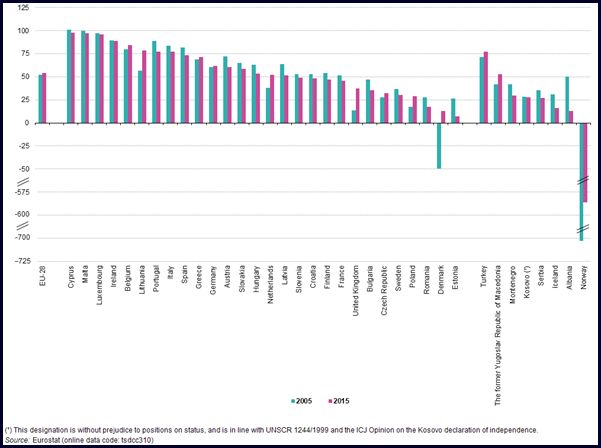
Aan de andere kant van de schaal, werden de hoogste energieafhankelijkheidscijfers geregistreerd in Malta (iets meer dan 100% vanwege de opbouw van aandelen), Cyprus (96,2%) en Luxemburg (96,1%), gevolgd door Italië (77,5% ), Litouwen (77,4%) en België (76,0%). Nederland is een middenmotor die op den duur meer energie zal moeten importeren.
Van de vijf lidstaten die de grootste hoeveelheden energie verbruikten, waren het Verenigd Koninkrijk (35,3%) en Frankrijk (47,1%) het minst afhankelijk van de invoer van energie, in tegenstelling tot Duitsland (63,5%), Spanje (71,9%) en Italië ( 77,5%), informeert Eurostat.
Sector Agri en Food
Financiële ondersteuning promotie Roemeense wijnen
Het Roemeense Ministerie van Landbouw heeft middelen beschikbaar gesteld voor de Roemeense wijnproducenten om hun hun wijnen te promoten en tevens krijgen de wijnproducenten toegang tot de Europese fondsen die daarvoor beschikbaar zijn. 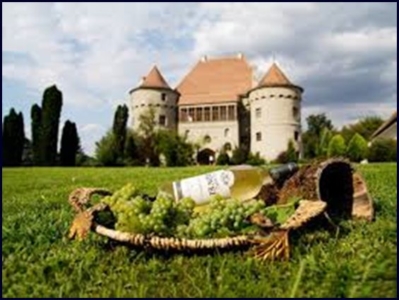 Deze minimisregeling wordt conform de Europese regelgeving niet als staatssteun gezien. Tot op heden ging de Roemeense overheid ervan uit dat een goed product zichzelf verkoopt ofwel goede wijn behoeft geen krans, waardoor de zeer goede wijnen voor de buitenlandse wijnimporteurs redelijk onbekend zijn gebleven, terwijl het land tot de grote wijnproducenten van de wereld behoort. Uiteraard is het wel bekend bij de selecte groep vinologen en Nederlandse ondernemers die in Roemenië actief zijn,maar het brede publiek draagt er nauwelijks kennis van. Voor Nederlandse wijninkopers ligt hier een uitgelezen kans om mee te liften op deze campagne waardoor zij kunnen anticiperen op de verhoogde vraag die vanuit de Nederlandse markt zal ontstaan.
Deze minimisregeling wordt conform de Europese regelgeving niet als staatssteun gezien. Tot op heden ging de Roemeense overheid ervan uit dat een goed product zichzelf verkoopt ofwel goede wijn behoeft geen krans, waardoor de zeer goede wijnen voor de buitenlandse wijnimporteurs redelijk onbekend zijn gebleven, terwijl het land tot de grote wijnproducenten van de wereld behoort. Uiteraard is het wel bekend bij de selecte groep vinologen en Nederlandse ondernemers die in Roemenië actief zijn,maar het brede publiek draagt er nauwelijks kennis van. Voor Nederlandse wijninkopers ligt hier een uitgelezen kans om mee te liften op deze campagne waardoor zij kunnen anticiperen op de verhoogde vraag die vanuit de Nederlandse markt zal ontstaan.
Volgens een recente publicatie van het Roemeense National Institute of Statistics (INS) is vrijwel over de hele linie de productie gestegen door een intensiever gebruik van de beschikbare grond. Als uitzondering op deze voorspoedige gang van zaken wordt de fruitsector genoemd waar de productie met 25,6% daalde. Een en ander impliceert dat er voor het consortium Holland Fruit House Romania nog een grote uitdaging ligt.
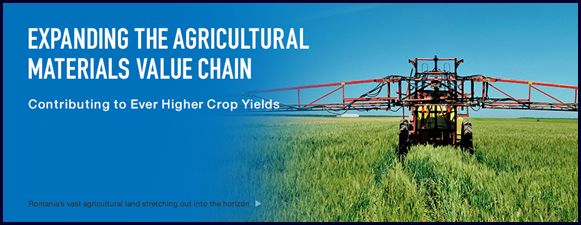
Het ministerie van Buitenlandse Zaken die clusters van bedrijven met het programma Partners for International Business (PIB) ondersteunt, zal deze ondersteuning nog beter moeten afstemmen op de verschillende situaties in landen en sectoren en onder andere de looptijden daarop moeten aanpassen. De ervaring heeft geleerd dat sommige activiteiten een langere doorlooptijd hebben.
Noemenswaard zijn onder andere dat het areaal voor graanproducten daalde met 6,9 procent, terwijl de productie met 12,4 procent steeg. Voor bessen en peulvruchten is de productie bijna verdriedubbeld, zowel door de groei van het areaal als door de opbrengst per hectare. Voor oliehoudende planten nam de productie met 29,5 procent toe door zowel de groei van het cultuurareaal (+ 6,9 procent) als de opbrengsten per hectare. Bij de suikerbietenteelt steeg de productie met 10,2 procent, voornamelijk als gevolg van de toename van het areaal met (8 procent). De aardappelproductie steeg ook met 16,3 procent als gevolg van de toename van de opbrengst per hectare, hoewel het areaal in de landbouwsector (-7,7 procent) daalde. In 2017 steeg de druivenproductie met 45,6 procent, als gevolg van de stijging van de opbrengst per hectare (+ 45,7 procent).
Chinezen en Arabieren actief in Roemeense landbouwsector
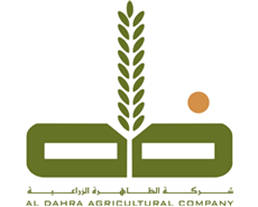 Het Roemeense bedrijf Agricost Braila, de grootste graanproducent van het land, staat op het punt om door de Al Dahra-group in Abu Dhabi(Verenigde Arabische Emiraten) te worden gekocht.
Het Roemeense bedrijf Agricost Braila, de grootste graanproducent van het land, staat op het punt om door de Al Dahra-group in Abu Dhabi(Verenigde Arabische Emiraten) te worden gekocht.
Agricost exploiteert 56.000 hectare van de meest vruchtbare grond van Roemenië op het eiland Great Braila en heeft een jaarlijkse omzet van ongeveer EUR 86 miljoen.
Het bedrijf heeft een langjarig huurcontract met de Roemeense staat voor het land. Zo kan Al Dahra ongeveer 200 miljoen euro betalen voor Agricost volgens schattingen van Ziarul Financiar.
Al Dahra is onderdeel van Al Ain holding, opgericht door Sheikh Hamdan Bin Zayed Al Nahyan. Het bedrijf heeft een jaaromzet van USD 1 miljard.
 De Chinese Reward Group, eigendom van de puissant rijke Hu Keqin, heeft via de Roemeense ambassade in China aangegeven dat hij geïnteresseerd in het verwerven van landbouwgrond in Roemenië. Overigens zijn reeds andere Chinese bedrijven actief in Roemenië zoals Shuanghui International Holdingd Ltd. in de vleesverwerkende sector, COFCO in de graansector, Meikeduo Foodstuff Corp. in de pluimveesector.In Frankrijk heeft de Reward Group ook circa 3000 hectare aan landbouwgronden gekocht(Indre en Allier-regio’s) alsmede daarmee verwante bedrijven.
De Chinese Reward Group, eigendom van de puissant rijke Hu Keqin, heeft via de Roemeense ambassade in China aangegeven dat hij geïnteresseerd in het verwerven van landbouwgrond in Roemenië. Overigens zijn reeds andere Chinese bedrijven actief in Roemenië zoals Shuanghui International Holdingd Ltd. in de vleesverwerkende sector, COFCO in de graansector, Meikeduo Foodstuff Corp. in de pluimveesector.In Frankrijk heeft de Reward Group ook circa 3000 hectare aan landbouwgronden gekocht(Indre en Allier-regio’s) alsmede daarmee verwante bedrijven.
Roemenië kent één van de hoogste prijsstijgingen voedsel in EU
Hoewel het prijsniveau vanuit Europees perspectief bezien nog zeer laag genoemd mag worden, heeft het er de schijn van dat een inhaalslag van start gegaan is.
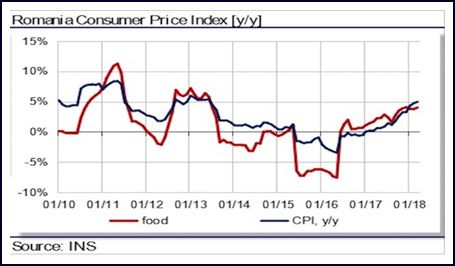 De prijsstijgingen van sommige producten waren, gemeten in februari dit jaar ten opzichte van het vorig jaar, ongeveer 12%, terwijl er in de afgelopen drie jaren slechts onbeduidende prijsstijgingen waren of zelfs prijsdalingen. De verwachting is dat de prijsstijgingen zich dit jaar doorzetten, aldus een analyse van de Europese Commissie. Deze analyse toont aan dat de hoogste stijging van de geharmoniseerde consumentenprijsindex is gemeld (dit is een prijsmaatstaf die door de Raad van Gouverneurs van de EU wordt gebruikt om de prijsstabiliteit in de eurozone als geheel in kwantitatieve termen te definiëren en te beoordelen). Voor de stijging van de voedselprijzen neemt Roemenië de vierde plaats in achter Estland (5,3%), Slowakije (4,9%) en Hongarije (4,2%). Het voornoemde impliceert uiteraard dat de Roemeense kosten van levensonderhoud zullen stijgen.
De prijsstijgingen van sommige producten waren, gemeten in februari dit jaar ten opzichte van het vorig jaar, ongeveer 12%, terwijl er in de afgelopen drie jaren slechts onbeduidende prijsstijgingen waren of zelfs prijsdalingen. De verwachting is dat de prijsstijgingen zich dit jaar doorzetten, aldus een analyse van de Europese Commissie. Deze analyse toont aan dat de hoogste stijging van de geharmoniseerde consumentenprijsindex is gemeld (dit is een prijsmaatstaf die door de Raad van Gouverneurs van de EU wordt gebruikt om de prijsstabiliteit in de eurozone als geheel in kwantitatieve termen te definiëren en te beoordelen). Voor de stijging van de voedselprijzen neemt Roemenië de vierde plaats in achter Estland (5,3%), Slowakije (4,9%) en Hongarije (4,2%). Het voornoemde impliceert uiteraard dat de Roemeense kosten van levensonderhoud zullen stijgen.
Maaltijdbezorging in Roemenië in opkomst
 Nadat het Nederlandse bedrijf Takeaway(Thuisbezorgd.nl) het Roemeense Online Food Order Plaform Olivera heeft gekocht en deze maaltijd bezorgdienst succesvol heeft opgestart heeft een concurrent deze markt betreden. De Spaanse onderneming Glovo heeft zich onlangs in Boekarest gevestigd . Het is een on-demand service die via de app voedsel en non-foodproducten bestelt. De service wordt in minder dan een uur uitgevoerd door onafhankelijke koeriers, Glovers genaamd. Zowel Takeaway als Glovo zijn geen nieuwkomers en zijn beide al in vele landen actief. De service van Glovo is momenteel beschikbaar in Spanje, Frankrijk, Portugal, Italië, Chili, Argentinië en Peru, maar Glovo heeft onlangs een financiering van EUR 30 miljoen aangetrokken van verschillende durfkapitaalfondsen om uit te breiden naar nieuwe markten. Het bedrijf werd gelanceerd in 2015 in Barcelona. Takeaway is actief in Nederland, Duitsland, Belgie, Oostenrijk en Polen. Uber heeft ook aangekondigd dat het zijn UberEats-voedselbezorgservice lokaal zal lanceren.
Nadat het Nederlandse bedrijf Takeaway(Thuisbezorgd.nl) het Roemeense Online Food Order Plaform Olivera heeft gekocht en deze maaltijd bezorgdienst succesvol heeft opgestart heeft een concurrent deze markt betreden. De Spaanse onderneming Glovo heeft zich onlangs in Boekarest gevestigd . Het is een on-demand service die via de app voedsel en non-foodproducten bestelt. De service wordt in minder dan een uur uitgevoerd door onafhankelijke koeriers, Glovers genaamd. Zowel Takeaway als Glovo zijn geen nieuwkomers en zijn beide al in vele landen actief. De service van Glovo is momenteel beschikbaar in Spanje, Frankrijk, Portugal, Italië, Chili, Argentinië en Peru, maar Glovo heeft onlangs een financiering van EUR 30 miljoen aangetrokken van verschillende durfkapitaalfondsen om uit te breiden naar nieuwe markten. Het bedrijf werd gelanceerd in 2015 in Barcelona. Takeaway is actief in Nederland, Duitsland, Belgie, Oostenrijk en Polen. Uber heeft ook aangekondigd dat het zijn UberEats-voedselbezorgservice lokaal zal lanceren.
De Roemeense markt voor levering van levensmiddelen wordt momenteel geschat op EUR 200 miljoen en zal naar verwachting zeer snel groeien.
Sector Mijnbouw
Wederom milieuramp door mijnbouwactiviteiten
Op 27 maart jl. voltrok zich een ernstige mijnramp in de Breinermijn in het dorpje Baiut in het district Maramures, waar giftig mijnwater zich vermengde met de rivier Lăpuş en ook het kleine dorp in stroomde. Een enorme vis- en vogelsterfte was direct het gevolg, maar had ook effect op de 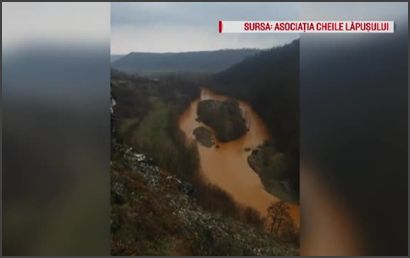 omliggende natuur. Op dit moment is het nog niet duidelijk welke gevolgen het voor de volksgezondheid heeft. Deze ramp is qua omvang vergelijkbaar met de mijnramp van 2000 die Baia Mare plaatsvond en 80 km is verwijderd van Baiut waar destijds water met de dodelijke stof cyanide in de rivier Tisza stroomde die vervolgens aansluitend ook in Donau terecht kwam. De eigenaren van deze mijnen zijn veelal afkomstig uit Australië en Canada. De exploitatie vindt meestal plaats volgens de open pit methode wat impliceert dat de exploitatie in de open lucht plaatsvinden c.q.plaatsvindt. Deze methode is in Europese Unie verboden want het veroorzaakt een tekort aan drinkwater(in het mijnwater zit onder andere het giftige arsenicum), het zorgt voor massale hoeveelheden mijnafval en kent een sterke vervuiling van onder meer zware metalen (lood, kwik en cyaniden). Deze komen in de voedselketen terecht en zorgen voor verontreiniging van grond- en bodemwater met de nodige gezondheidseffecten (miskramen, leermoeilijkheden). Dit soort mijnbouw wordt toegepast in landen waar de grond en arbeidskrachten goedkoop zijn. Het is duidelijk dat dit voor grote conflicten zorgt. Deze multinationale mijnbouwbedrijven plegen roofbouw plegen op mens en milieu.
omliggende natuur. Op dit moment is het nog niet duidelijk welke gevolgen het voor de volksgezondheid heeft. Deze ramp is qua omvang vergelijkbaar met de mijnramp van 2000 die Baia Mare plaatsvond en 80 km is verwijderd van Baiut waar destijds water met de dodelijke stof cyanide in de rivier Tisza stroomde die vervolgens aansluitend ook in Donau terecht kwam. De eigenaren van deze mijnen zijn veelal afkomstig uit Australië en Canada. De exploitatie vindt meestal plaats volgens de open pit methode wat impliceert dat de exploitatie in de open lucht plaatsvinden c.q.plaatsvindt. Deze methode is in Europese Unie verboden want het veroorzaakt een tekort aan drinkwater(in het mijnwater zit onder andere het giftige arsenicum), het zorgt voor massale hoeveelheden mijnafval en kent een sterke vervuiling van onder meer zware metalen (lood, kwik en cyaniden). Deze komen in de voedselketen terecht en zorgen voor verontreiniging van grond- en bodemwater met de nodige gezondheidseffecten (miskramen, leermoeilijkheden). Dit soort mijnbouw wordt toegepast in landen waar de grond en arbeidskrachten goedkoop zijn. Het is duidelijk dat dit voor grote conflicten zorgt. Deze multinationale mijnbouwbedrijven plegen roofbouw plegen op mens en milieu.
Canadezen proberen opnieuw laakbare goudexploitatie te starten
De controversiele mijnmaatschappij Euro Sun Ming uit het Canadese Toronto is gevestigd waagt weer een poging tot een laakbare goudexploitatie er door te drukken via zijn Roemeense dochteronderneming Samax.
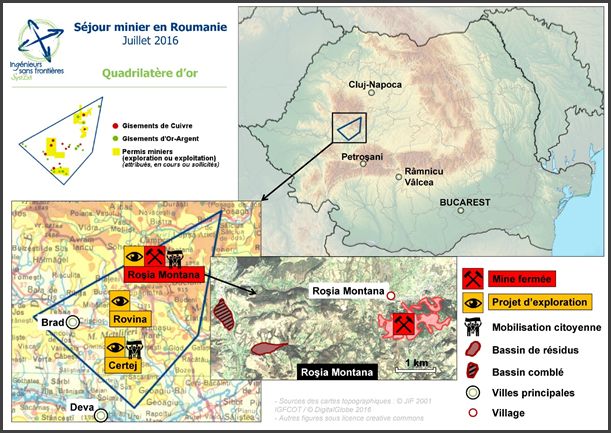
Deze heeft zijn oog laten vallen op goudmijn Rovina waarvan de goudvoorraad 5 miljard zou zijn. Als men in ogenschouw neemt dat het eveneens Canadese Gabriel Resources(Toronto) geen toestemming kreeg om de 50 km van Rovina gelegen goudmijn Rosia Montana dan zal menigeen willen weten welke verbanden tussen deze twee bedrijven bestaan, zeker omdat zij dezelfde argumenten hanteren als het eerder genoemde Gabriel Resources en beide in Toronto gevestigd zijn. De bezwaren die hebben geleid tot een exploitatieverbod van Rosia Montana zijn evenzeer voor de goudmijn van Rovina van toepassing. Zeker omdat beide ook de verboden exploitatie van “open pit” gebruiken waarbij ook cyanide wordt gebruikt. Dus het is niet verwonderlijk dat de tegenstanders verenigd in Mining Watch de messen reeds slijpen.
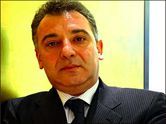 De man achter Gabriel Resources is de Australisch/Roemeense Frank Timiş die in verleden als asielzoeker in Perth belandde en daar in de gevangenis een straf heeft uitgezeten voor heroinesmokkel.
De man achter Gabriel Resources is de Australisch/Roemeense Frank Timiş die in verleden als asielzoeker in Perth belandde en daar in de gevangenis een straf heeft uitgezeten voor heroinesmokkel.
Thans voert hij processen in Burkina Fasso waar hij onder de naam van Pan African Burkina Limited (PAB) de beslissing van de regering aanvecht die de exploitatie van de grote mangaanmijn Tamboa niet wil toestaan.
Het kan een zeer gevoelige zaak worden voor het Nationaal Agentschap voor Minerale Hulpbronnen (ANRM) en Samax Romania SRL. Immers de concessie werd al door Samax verkregen in 2015, het jaar waarin het Roşia Montană-project werd opgeschort. Sindsdien is het wetgevingsproces van goedkeuring getekend. Aan het eind van vorig jaar versnelden de procedures, waarbij de Roemeense staat grote verwachtingen van dit project had. Het mag duidelijk zijn dat de Roemeense regeringen(van verschillende samenstellingen) iets uit te leggen hebben.
Sector Toerisme
Eerste hotel in Roemenië die betaling in Bitcoins accepteert
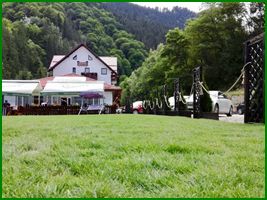 Het viersterrenhotel Popasul Regelui in het ditrict Alba is de eerste accommodatie in Roemenië die de betaling van diensten met Bitcoin accepteert, zo blijkt uit een persbericht.
Het viersterrenhotel Popasul Regelui in het ditrict Alba is de eerste accommodatie in Roemenië die de betaling van diensten met Bitcoin accepteert, zo blijkt uit een persbericht.
Het hotel ligt nabij de bergweg Transalpina, de hoogste weg van het land, en heeft 20 kamers en een restaurant met terras. Het meer van Bistra ligt in de buurt.
“Ik heb altijd begrepen dat mensen de vrijheid willen hebben om te kiezen en, meer dan dat, ze hebben opties nodig waaruit ze kunnen kiezen wat het meest representatief voor hen is. Als in het verleden alleen contante betalingen werden geaccepteerd, werd de betaling per kaart ingevoerd en nu willen steeds meer mensen een dienst kunnen betalen met Bitcoin. Ik was verrast door het groeiend aantal van dergelijke verzoeken, die voornamelijk via onze website kwamen, vooral van toeristen buiten ons land, “zei Traian Cornea, manager van Popasul Regelui Hotel.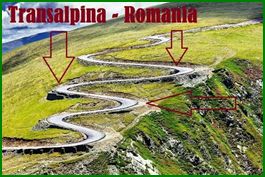
Op een hoogte van 2145 meter is de nationale weg DN 67C, ook wel Transalpina of de King’s Highway genoemd, is de hoogstgelegen weg in Roemenië en biedt een fantastisch uitzicht. Verder naar het zuiden ligt aan deze bijzondere weg ook de nieuwe wintersportplaats Rânca. Zie ook www.popasulregelui.ro
Fiscale ontwikkelingen
Tarieven inkomstenbelasting in EU lidstaten
Onderstaand een lijst van de maximale tarieven van inkomstenbelastingen in de EU lidstaten waarvan een aantal 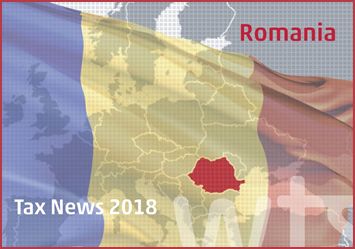 landen zoals Roemenië een flattax hanteren. “In deze wereldzijn geen zekerheden,behalve de dood en belastingen”, aldus Benjamin Franklin. Maar het is zeker dat sommigen in de wereld meer belastingen betalen dan anderen. Tot verbazing van velen staan de Roemenen onderaan de lijst met belastingen die over de hele wereld worden betaald, echter wij beperken ons voorlopig tot de Europese lidstaten.
landen zoals Roemenië een flattax hanteren. “In deze wereldzijn geen zekerheden,behalve de dood en belastingen”, aldus Benjamin Franklin. Maar het is zeker dat sommigen in de wereld meer belastingen betalen dan anderen. Tot verbazing van velen staan de Roemenen onderaan de lijst met belastingen die over de hele wereld worden betaald, echter wij beperken ons voorlopig tot de Europese lidstaten.
Sweden 61.85,Denmark 55.80,Austria 55.00,Belgium 53.70,Netherlands 52.00, Finland 51.60,Slovenia 50.00, Luxembourg 48.78, Ireland 48.00, Portugal 48.00, Germany 47.50, France 45.00, Greece 45.00,Spain 45.00,United Kingdom 45.00,Italy 43.00, Europees gemiddelde 38.60, Croatia 36.00,Malta 35.00, Poland 32.00,Slovakia 25.00,Estonia 20.00,Latvia 20.00,Hungary 15.00,Lithuania 15.00, Bulgaria 10.00 en Romania 10.00
Sociaal Economische ontwikkelingen
Laagste uurlonen van EU in Roemenië en Bulgarije
Roemeense werknemers ontvingen in 2017 een gemiddelde vergoeding van EUR 5,5 per gewerkt uur, de op één na laagste vergoeding in de Europese Unie (EU).
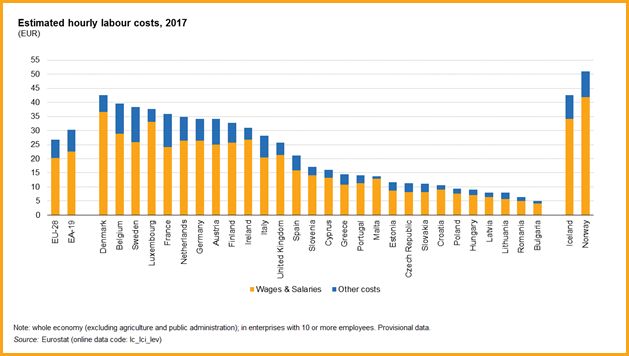
Alleen Bulgaarse werknemers ontvangen minder namelijk EUR 5,1 per uur.
De gemiddelde uurcompensatie van werknemers in de EU bedroeg EUR 23,1, met het hoogste niveau geregistreerd in Luxemburg (EUR 43,8), Denemarken (EUR 38,7) en België (EUR 37,9). Een hoger dan de gemiddelde vergoeding per uur zijn ook in Frankrijk, Nederland en Duitsland van toepassing.
Ten opzichte van 2007 was de beloning van werknemers per gewerkt uur vorig jaar hoger in alle lidstaten, behalve in Griekenland, waar deze met 7% daalde (van EUR 12,1 naar EUR 11,2) en het Verenigd Koninkrijk (van EUR 27,3 naar EUR 25,5). De grootste relatieve stijging over deze periode van tien jaar werd genoteerd in Bulgarije (van EUR 2,3 tot EUR 5,1 of + 122%), vóór Estland (+ 67%), Slowakije en Litouwen (beide 62%). In Roemenië steeg de gemiddelde vergoeding per gewerkt uur met 40%, van 3,7 EUR in 2017 tot 5,2 EUR.
Roemenië had het hoogste percentage werknemers met een risico op armoedeval in de EU, namelijk 18,9% volgens de gegevens van 2016.
Ontslagkosten in Roemenië, één van de laagste in Europa
Roemenië is één van de landen met de laagste ontslagkosten voor werkgevers in Europa, hetzij om individuele of economische redenen, volgens de vierde editie van de International Dismissal Survey gepubliceerd door Deloitte Legal, in Roemenië vertegenwoordigd door Reff & Associates.
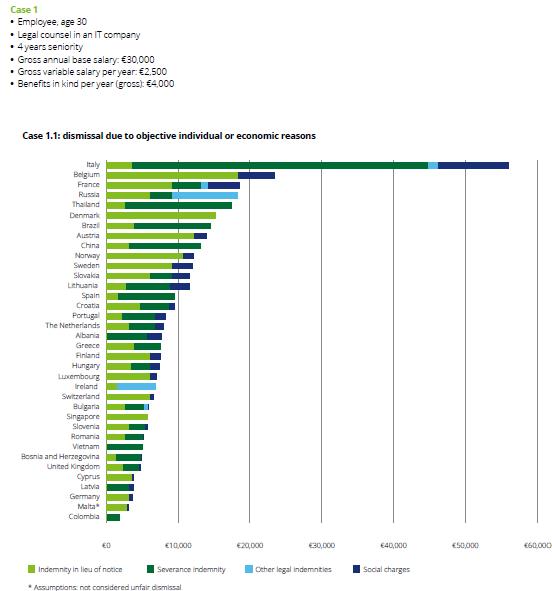
De analyse vergelijkt zes ontslagkosten in 45 landen. De onderzoeksgegevens vertegenwoordigen drie afzonderlijke gevallen met verschillende anciënniteits- en beloningspakketten.
“Uit ons onderzoek blijkt dat de kosten van ontslag in het algemeen lager zijn dan in andere landen en niet worden beïnvloed door de variabele anciënniteit. Een verklaring hiervoor is te vinden in de bepalingen vinden van de Roemeense Arbeidswet, die geen onderscheid maakt in de ontslagvoorwaarden vanwege de anciënniteit, “zei Florentina Munteanu, partner en hoofd van de arbeidsrechtspraktijk bij Reff & Associates. “Veel werkgevers hebben ontslagvoorwaarden geregeld in collectieve arbeidsovereenkomsten en uit onze ervaring kunnen we bevestigen dat de anciënniteit een variabele is die van invloed is op het ontslagpakket. Dergelijke overeenkomsten zijn echter van beperkte toepasbaarheid (op werkgevers- of sectorniveau), daarom kunnen we deze praktijk niet beschouwen als algemeen toepasbaar op het niveau van werkgevers in Roemenië. ”
Volgens Raluca Bontas, Partner Global Employer Services Deloitte Romania, is de berekeningsbasis een verklaring die voor Roemenië geldt met lagere ontslagkosten in het geval van werknemers met middelloon, zoals uit de enquête blijkt.
“Naast de ranglijst moet men ook kijken naar hoe het ontslag wordt vertaald in de lokale wetgeving van de onderzochte landen, wat erg varieert,” voegde Bontas toe.
Wat ook interessant is om te zien aan de hand van de resultaten van de enquête, is dat er een aantal landen zijn waar nascholing door de rechtbanken niet kan resulteren in herstel van de arbeidsverhouding en in die landen zijn de ontslagkosten een van de hoogste. In Roemenië, maar ook in Frankrijk, Duitsland, Griekenland, Italië en vele andere landen, kunnen rechtbanken de werknemer herplaatsen na een onwettig of onredelijk ontslagbesluit en een dergelijke beslissing zal uiteindelijk invloed hebben op de totale kosten van het ontslag. Desalniettemin kunnen dergelijke kosten niet van tevoren worden voorzien en is het moeilijk om het vanaf het begin te kwantificeren.
Een alarmerende toename van het handelstekort van Roemenië
Het handelstekort van Roemenië (het verschil tussen import en export) steeg in slechts twee maanden met 35%, volgens gegevens die een dezer dag zijn vrijgegeven door het National Institute of Statistics (INS).
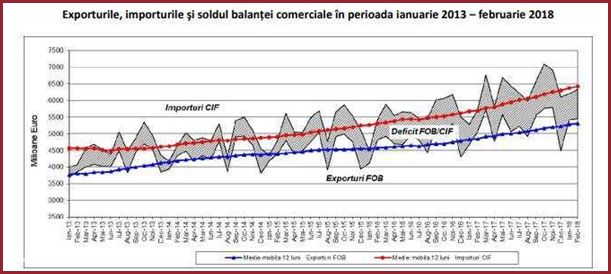
De uitvoer van Roemeense goederen steeg in februari met 7,6% ten opzichte van februari vorig jaar, tot 5,46 miljard euro, onder het niveau van de invoer, en het handelstekort bleef toenemen. In februari 2017 bedroeg het handelstekort 651,6 miljoen euro, volgens News.ro. In januari 2018 steeg het handelstekort met 28,1% in vergelijking met januari 2017 tot 775 miljoen euro, aldus capital.ro. Roemenië noteerde het derde grootste tekort op de lopende rekening in de Europese Unie in het laatste kwartaal van 2017, na het VK en Griekenland, laten Eurostat- gegevens zien.
In de laatste drie maanden van vorig jaar werd het grootste EU-tekort geregistreerd door het VK (17,1 miljard EUR), gevolgd door Griekenland (-2,8 miljard) en Roemenië (-1,4 miljard)
17 EU-landen boekten overschotten, 9 tekorten en twee evenwichtige saldi. De grootste overschotten werden behaald door Duitsland (+75,4 miljard), Nederland (+20,9 miljard), Italië (+15,6 miljard) en Ierland (+14,9 miljard).
ArcelorMittal verkoopt zijn staalfabriek in Galati
De leiding van het bedrijf heeft bevestigd dat zijn vestiging in Galati wordt verkocht en vooralsnog worden nog vijf productielocaties in Roemenië opengehouden.
 Deze sluiting staat niet op zich, want elders in Europa worden ook diverse vestigingen gesloten zoals in ArcelorMittal Piombino – de enige gegalvaniseerde staalfabriek in Italië, ArcelorMittal Skopje – Macedonië, ArcelorMittal Ostrava – Tsjechië, ArcelorMittal Dudelange – Luxemburg; Thermisch verzinkte leidingen 4 en 5 in Flemalle; warmgewalste beitsen, koud rollen en tin verpakkingslijnen in Tilleur, die allemaal in Luik, België. Deze Europese sanering is al jaren aan de orde en is blijkbaar nog niet voldoende. En we spreken hier van de grootste staalproducent van de wereld.
Deze sluiting staat niet op zich, want elders in Europa worden ook diverse vestigingen gesloten zoals in ArcelorMittal Piombino – de enige gegalvaniseerde staalfabriek in Italië, ArcelorMittal Skopje – Macedonië, ArcelorMittal Ostrava – Tsjechië, ArcelorMittal Dudelange – Luxemburg; Thermisch verzinkte leidingen 4 en 5 in Flemalle; warmgewalste beitsen, koud rollen en tin verpakkingslijnen in Tilleur, die allemaal in Luik, België. Deze Europese sanering is al jaren aan de orde en is blijkbaar nog niet voldoende. En we spreken hier van de grootste staalproducent van de wereld.
Natuurrampen
Zware aardbeving in Roemenië
Het district Vrancea is één van de meest seismische actieve gebieden van Europa en in het aangrenzende district Buzau vond vorige week aardbeving plaats van 4,6 op de schaal van Richter.
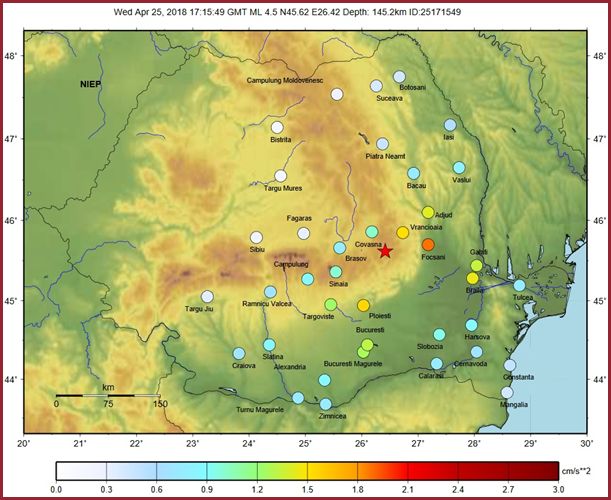
Het episch centrum lag in de regio Intorsura Buzaului. Volgens het Nationaal Instituut voor Aardfysica (INFP) vond de aardbeving plaats in de buurt van de volgende steden: Nehoiu (22 km), Covasna (37 km), Intorsura Buzaului (44 km), Târgu Secuiesc (51 km), Vălenii de Munte (59 km).
Woestijnvorming in het zuiden van Roemenië
Al meer dan een decennium vindt in het district Dolj woestijnvorming plaats op een zeer intensieve wijze door onder andere ontbossing, temperatuurstijging en de door chaos die ontstond na de revolutie in 1989 waardoor het tot dan goed functionerent irrigatiesyteem volledig werd vernietigd. In 1970 bedekten de bossen, die de effecten van de dorheid in het gebied moesten verminderen, 12% van het oppervlak van het Dolj district en nu is dat als gevolg van illegale ontbossing slechts 7%.
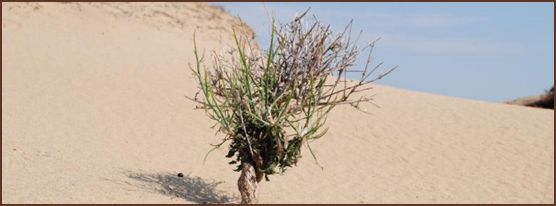
Het getroffen gebied beslaat meer dan 100.000 hectare tussen Craiova, Calafat en Corabia, bekend als de Sahara van Oltenia. De nog overgebleven boeren in het gebied zijn overgestapt op het verbouwen van gewassen die geschikt zijn voor de zandgronden, zoals zoete aardappelen of pinda’s. Eind vorig jaar plantten vrijwilligers meer dan 5000 acacia’s in het district Dolj, maar er is meer nodig om de woestijnvorming te bestrijden, zeggen de specialisten. Uiteraard simpelweg met het herstel van het irrigatiesysteem wat mogelijk is met de Donau als waterbron in de directe nabijheid.
Nu de Roemeense overheid de hoogste prioriteit heeft toegekend aan de agrarische sector mag men toch verwachten dat deze ernstige situatie wordt aangepakt. Kansen genoeg voor (Nederlandse) bedrijven die irrigatiewerken kunnen uitvoeren en het niet beperken tot plannen die weer in een bureaulade verdwijnen. Het mes snijdt aan twee kanten, want het gebied mag tot de armste van het land worden gerekend en het heeft een enorme sociale impact.
Bijzondere berichten
How the Dutch are doing business in Romania
Many Dutch companies have found their way to Romania. For years, 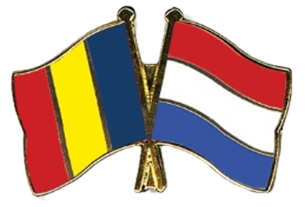 the Netherlands has been the number 1 foreign investor in Romania and a top 10 trading partner. It’s clear that Dutch companies enjoy doing business here, and even shifted part of their production and other facilities for economic and strategic reasons. Let’s hear from some Dutch companies about the success of their businesses in Romania.
the Netherlands has been the number 1 foreign investor in Romania and a top 10 trading partner. It’s clear that Dutch companies enjoy doing business here, and even shifted part of their production and other facilities for economic and strategic reasons. Let’s hear from some Dutch companies about the success of their businesses in Romania.
Dragos Geletu, managing director Kuijken Logistics Group (KLG)
Could you tell us about your company in Romania?
Geletu: KLG Europe offers worldwide logistic services, from transport by road, water or rail to value added services in our modern warehouses. KLG is family owned company that has 100 years of history, 3 generations, with its headquarters in Venlo, the Netherlands. We opened KLG Romania 12 years 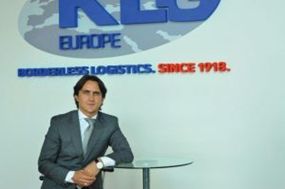 ago starting from zero, now having a company of EUR 40 million turnover, over 500 employees, over 70.000 sq m of warehousing space with modern technologies and an investment of over EUR 30 million. In Romania, KLG has experienced one of the most dynamic growth over the last years. The head office of KLG Romania is located in Bucharest, we are active in 8 other locations: Cluj Napoca, Constanta, Craiova, Brasov, Timisoara, Bacau, Buzau and Sibiu.
ago starting from zero, now having a company of EUR 40 million turnover, over 500 employees, over 70.000 sq m of warehousing space with modern technologies and an investment of over EUR 30 million. In Romania, KLG has experienced one of the most dynamic growth over the last years. The head office of KLG Romania is located in Bucharest, we are active in 8 other locations: Cluj Napoca, Constanta, Craiova, Brasov, Timisoara, Bacau, Buzau and Sibiu.
What makes doing business in Romania attractive?
Geletu: KLG decided to invest in Romania especially for the great potential of people. That was the main reason and it is still important element of our future strategy. We believe in the potential of Romania and its people.
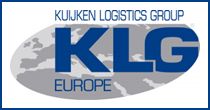 How do you see your business develop in the coming years?
How do you see your business develop in the coming years?
Geletu: We will for sure grow in the same way as for the last years probably not only organic but also through investments and acquisitions.
Vassilis Stavrou, CEO Mega Image(Ahold-Delhaize)
Could you tell us about your company in Romania?
Stavrou: Since our first supermarket opened in 1995, we have grown to become a loved brand on the Romanian market, with a particularly strong presence in Bucharest as the no. 1 supermarket awarded by our clients. At this moment, our 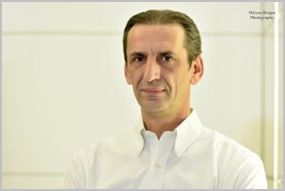 network has over 600 stores around the country, with a team of over 11.000 people working together to bring fresh inspiration to our customers every day and helping them enjoy their life.
network has over 600 stores around the country, with a team of over 11.000 people working together to bring fresh inspiration to our customers every day and helping them enjoy their life.
At the heart of Mega Image growth and expansion on the local market is the unique philosophy based on the simple idea of making our customers enjoy their life. To bring this philosophy to life, our vital business assets are proximity, enhanced food experience, best shopping experience, quality and innovation. Our customers turn to us for the difference we make through innovative, great value products and best price, and also through our stores design, whether they are looking for healthy food, cooking inspiration or just something different to celebrate a special occasion.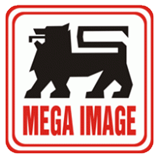
What makes doing business in Romania attractive?
Stavrou: The competitive retail market is moving at high speed, with a continuous evolution and growth every year. Romanian consumers have an imperative role in guiding the entire retail market, acting as very active consumers, adopters of recent trends and demanding for best offers and quality services. In the latest years, Romanian consumers have become more attentive to what they buy and, in the meantime, they have added a new selection filter for any purchase, along with price and quality: it’s about the store experience.In a highly competitive market with high demands from consumers, Mega Image stands out as more than a supermarket, but as one of Romanians’ best loved and responsible retailers. The secret behind this achievement is a constant meet of consumers’ needs through food experience and an inspiring shopping experience in all the stores, especially in the Concept Stores that offer an ultimate customer experience.
How do you see your business develop in the coming years?
Stavrou: We’ve started this journey more than 20 years ago and we believe we made a valuable change in what the shopping experience means for Romanians. We’ll go further and continue to be more than a supermarket, but an inspiring brand, continuously evolving and bringing fresh inspiration every day.
Herman Wierenga, managing director ORTEC
Could you tell us about your company in Romania?
Wierenga: The story of ORTEC Central and Eastern Europe began in 2008 when I, together with a colleague, established a division in Bucharest, to support ORTEC’s customers in the region. Now, we have become one of the largest D utch tech companies in Romania and continuously strive to positively impact the market and the next IT&C generation, through smart mathematical solutions, a strong regional presence, partnerships with universities and more. During our 10 years of activity, we developed at a sustainable pace, we hired more people every year, reaching 160 people and grew our customer base to over 100 organizations. The most profitable areas for us are transport, logistics, and retail. ORTEC will continue to invest in our Romanian operations. We will start up new research & development teams in Bucharest and also in other areas we are continuously expanding.
utch tech companies in Romania and continuously strive to positively impact the market and the next IT&C generation, through smart mathematical solutions, a strong regional presence, partnerships with universities and more. During our 10 years of activity, we developed at a sustainable pace, we hired more people every year, reaching 160 people and grew our customer base to over 100 organizations. The most profitable areas for us are transport, logistics, and retail. ORTEC will continue to invest in our Romanian operations. We will start up new research & development teams in Bucharest and also in other areas we are continuously expanding.
What makes doing business in Romania attractive?
Wierenga: We consider Romania as much more than an outsourcing location: it is a great place for building a business, to expand our worldwide presence and to excel in research, development & innovation. Romania has a lot of talented IT professionals who are flexible, smart and independent. We are global leader in the field of Planning & Optimization, we make, sell and implement our own products and our developers in Bucharest work with the newest technologies and innovations. I think this is also the future for Romania’s IT sector: less focus on outsourcing and more focus on software creation, research & development. We’ve had the pleasure of working with leading companies delivering added value to their business-critical processes through the power of mathematics. By creating and developing ORTEC’s collaboration with universities, we bring together our experts, support education with best practices in the field and provide a platform for research, development and innovation.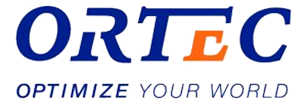
How do you see your business develop in the coming years?
Wierenga: We will continue our rapid growth in Central and Eastern Europe from our regional headquarters in Bucharest. The demand for our solutions in the region is growing, as companies understand more and more the need for efficiency, automation and optimization. And, because our Romanian staff is also very appreciated by our customers outside the CEE region, we also foresee an expansion of the number of people working for global projects and software development.
Michal Szczurek, CEO ING Bank Romania
Could you tell us about your company in Romania?
Szczurek: ING Bank Romania is the first foreign bank to enter the Romanian market after communism, 24 years ago, and since then it  has been a benchmark of innovation. We were the first supplier of electronic banking services in 1995 and, in 2004, the first to introduce the SelfBank concept. Now ING is well-known for its digital services, including internet banking services for both retail and corporate, and its banking products available online on all three business lines: wholesale banking, mid-corporate and retail.With great focus on customer experience put in by the 3000 people working for ING in the country, we reported the highest organic growth among the top ten banks in the country and finished 2017 as the 6th bank according to assets and 4th according to profit.
has been a benchmark of innovation. We were the first supplier of electronic banking services in 1995 and, in 2004, the first to introduce the SelfBank concept. Now ING is well-known for its digital services, including internet banking services for both retail and corporate, and its banking products available online on all three business lines: wholesale banking, mid-corporate and retail.With great focus on customer experience put in by the 3000 people working for ING in the country, we reported the highest organic growth among the top ten banks in the country and finished 2017 as the 6th bank according to assets and 4th according to profit.
What makes doing business in Romania attractive?
Szczurek: If I were to choose the top three reasons why doing business in Romania is attractive, I would summarize those in three areas: dynamic growth in banking sector; demanding clients and great people.Romania is a growth market and we believe there is room for growth and innovation, emphasizing on digital and technological advancement. Our clients demand more of us every day comparing us not with other banks, but with top digital platforms worldwide.
We have great people within ING who thrive on change and innovation and we continue to look for and find great people in Romania that help us grow and meet the challenges our clients raise.
The fast pace in which ING grew also demanded more involvement in the local communities in Romania. In the past four years, we grew our CSR investment from EUR 0.9 million to EUR 7.8 million, focusing on promoting entrepreneurship, empowering people to deal with financial problems, supporting urban development and community development programs.
How do you see your business develop in the coming years?
Szczurek: We invested approximately EUR 10 million per year in digitalizing our services and products so that we meet not only our customers’ needs today, but the global trends of tomorrow. We believe the rate of growth will remain positive and there is still room for organic growth on all business lines.
However, when it comes to banking services, I believe customer experience will be the game changer and I trust our fantastic ING team will continue to rise to the challenge to continuously improve customer experience.
Philip Aarsman, Managing Director Business Lease Romania
What are the focus points and the challenges for Business Lease in 2018?
Aarsman:Enough I would say. Business Lease has been on the Romanian market for over three years now and since the very beginning we have focused on CARE and Total Cost of Mobility optimization. The best solutions for our customers’ most pressing needs – this is our aim.
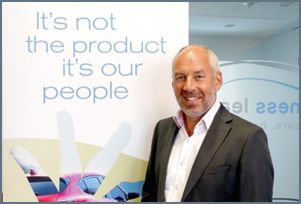 In 2018 we want to add new products to our portfolio in order to facilitate the need for personalized services required by fast growing industry segments, such as courier and distribution areas. We also want to introduce our clients to a new approach over full service operational leasing by consolidating our partnerships in which strategic focus areas such as cost, time and operational efficiency integrate client care.
In 2018 we want to add new products to our portfolio in order to facilitate the need for personalized services required by fast growing industry segments, such as courier and distribution areas. We also want to introduce our clients to a new approach over full service operational leasing by consolidating our partnerships in which strategic focus areas such as cost, time and operational efficiency integrate client care.
Business Lease starts the year committing to a new mission: Passion for Mobility, please check our new website. We are dedicated to bringing mobility to a new level by creating innovative mobility opportunities with new power trains (EV and Hybrid) and allowing users to integrate various means of transport: vehicle, bike, train, subway, car sharing etc.
What are the innovative solution Business Lease propose for fleet administration?
Aarsman:Business Lease has kept up with the changes and launched Connected Care, a program through which all the vehicles in our fleet are connected to a database recording online: their mileage, fuel consumption and other important notifications a driver might receive via its car dashboard. These data allow us to be efficient and proactive by directing our users in due time for servicing, thus optimizing costs and time. Our clients and users receive daily updated information about their vehicles and fuel consumption in order to manage and reduce the total costs of mobility.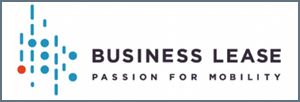
How will fleet management and operational leasing evolve in the next 5 years?
Aarsman: The demand for operational leasing services has grown and we expect this trend for the years to come mainly due to the fact that companies started to understand, valuate and appreciate the benefits of operational leasing in terms of administrative, process and as a result important financial advantages. This financing solution offers multiple benefits to companies by decreasing costs and time involved in the administration of the fleet. Vehicle fleet is after HR costs, still a significant part of the budget of many companies, as cars are an important working tool or employee benefit. Operational leasing offers companies the possibility not having to invest in their vehicle fleet, but to focus on their core business and to pay just for the usage, with no risks related to its depreciation or unexpected costs during the exploitation time.
Are electric and hybrid vehicles a solution for companies?
Aarsman:For vehicles with multiple stops during the day, driving an average distance of 100 km per day, such as LCVs, courier vehicles, as well passenger transport vehicles, electric vehicles could even be the best solution. In Romania, Business Lease is a pioneer in this area and has already clients who adopted electric solutions even before Rabla Plus program was introduced.
How do you feel the pulse of the operational leasing in Romania?
Aarsman:Bucharest remains at this moment the most deveoped area in terms of operational leasing consumption and we have recorded here our highest business increase. (International) companies are familiar with the concept, they used the service with good results in other countries and are willing to adopt it. The western part of the country where impressive results in terms of economic growth have been recorded is still in the phase of assimilating the concept. We have here a very solid community of local entrepreneurs who need to be trained into learning the advantages of operational leasing and understanding the benefits of outsourcing all fleet management time consuming operations and risks. We took up this challenge last year when we opened our new regional branch for Transilvania in Cluj because being close to your (potential) customers is crucial to start a business and develop the cooperation with them.
Loredana Van de WAART, Partner, GRUIA DUFAUT LAW OFFICE
How do foreign investors see the economic developments and the business climate in Romania, from your experience as a business attorney?
Van de Waart: Romania remains an attractive destination for foreign investors specializing in emerging markets, in the context of a strong economic growth of 6.9% in 2017, which is, unfortunately, based mainly on consumption. In order to become a privileged destination in the region for medium and long-term investments – the only ones able to reduce the gap between Romania and the rest of the European countries – we must come up with concrete projects 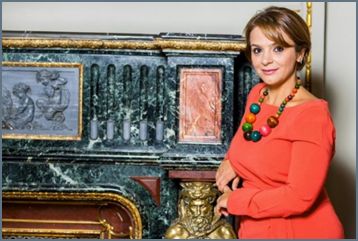 to present to investors. One solution would be to stop adopting so many strategies and instead to implement those already approved. It is a pity that, although Romania has recorded an important economic growth, this growth is not reflected in the living standard of the population. Why? Because Romania still lacks investments and stakeholders have shown that they are not able to ensure a competitive framework.
to present to investors. One solution would be to stop adopting so many strategies and instead to implement those already approved. It is a pity that, although Romania has recorded an important economic growth, this growth is not reflected in the living standard of the population. Why? Because Romania still lacks investments and stakeholders have shown that they are not able to ensure a competitive framework.
When deciding whether to enter a market or not, investors analyze several indicators, which concern: economic performance, political and legislative stability, market size, supply of logistics spaces, infrastructure status, labor costs, productivity. Or, the net foreign direct investment (FDI) flow recorded by Romania in 2016, according to the National Bank of Romania, was 4.5 billion euros (compared to 9.5 billion euros in 2008, before the crisis), significantly lower than the volume of investments attracted by countries in the region, such as Poland, the Czech Republic or Hungary. Unfortunately, last year’s fiscal and legal changes, poor infrastructure and even the accelerated rise in labor costs in some sectors are important challenges for foreign investors and local entrepreneurs alike. But the battle is not lost, the regional competition is undergoing, and Romania should take advantage of its business opportunities in various sectors and capitalize its strengths. Significant M&A transactions, as well as state investments are still expected in Romania. As far as the investment framework is concerned, Romania must abandon fiscal instability and diversify its fiscal incentives, in particular to attract investment in innovative technologies, research and development centers.
You have recently been elected as a member of the board of directors of the Dutch Chamber of Commerce in Romania. How can Romania attract more Dutch investments? What can be done?
Van de Waart: Indeed, in March, I have received the NRCC members’ vote for a membership in the Board. This vote honors me and also represents a challenge for me. The expectations of the business community reunited under the NRCC concern both the improvement of the business environment and the promotion and enforcement of the economic Dutch business model, which is particularly performant in terms of innovation and development, education policies, health. The Dutch economy is one of the most dynamic poles of the EU, both in terms of trade and industry. But, besides the reputation of the Dutch to excel in the art of trade, they are champions of innovation in many economic sectors. According to the “European Innovation Scoreboard” for 2017, published by the European Commission, the Netherlands is among the “innovation champions”, alongside Germany, Denmark, the UK and Sweden, which means that the results of these countries in innovation are well above the European Union average.In comparison, Romania is not even among “moderate innovators”, unlike other countries from our region, such as Croatia, Hungary, Poland, the Czech Republic or Slovakia; Romania is only part of the group of countries with “modest innovation”.
“European Innovation Scoreboard” for 2017, published by the European Commission, the Netherlands is among the “innovation champions”, alongside Germany, Denmark, the UK and Sweden, which means that the results of these countries in innovation are well above the European Union average.In comparison, Romania is not even among “moderate innovators”, unlike other countries from our region, such as Croatia, Hungary, Poland, the Czech Republic or Slovakia; Romania is only part of the group of countries with “modest innovation”.
Or, this is paradoxical, because Romania has a skilled labor force and it should create the economic and social conditions to keep this labor force in the country, while helping it grow (for example, by attracting more European funds). The EU offers significant funding to innovation, research and development projects, but Romania does not seem to realize their importance. Romania should take the Dutch example, as the Netherlands is a reservoir of research and development centers. Its key sectors are agro-food, high-tech systems and materials, chemicals and health, high tech and innovative technology, creative industry – exactly the sectors where Romania lacks development.
On the other hand, in order to attract new Dutch investments, Romania must prove legislative predictability and, more importantly, come up with coherent projects and demonstrate a firm attachment to European values. The Dutch are pragmatic and direct people, who value fairness and rigor.
How does the GRUIA DUFAUT Law Office support investors wishing to enter or develop their business on the local market? What distinguishes you from other law firms?
Van de Waart: Entering a market implies a global approach from investors. They need to understand the business environment and local market specificities and this is where we come in. We assist them from the very beginning, we try to have the best understanding of their business, of their objectives, to provide them with “tailor-made” solutions, compliant with the laws of Romania.
Our law firm has accumulated over 25 years of experience in the field of foreign investments. This allows us to come up with a double perspective – on Romanian and European law in general -, which enables us to successfully handle the matters entrusted to us by our clients, who are mainly French, Dutch, Italian, Belgian and Swiss investors.
We frequently advise and assist our clients in complex matters, corresponding to our main areas of expertise: M&A (company, asset sales/acquisitions, business transfers, greenfield investments), real-estate transactions (real-estate due diligence, transaction structuring, assistance during negotiations and document drafting), public procurement and PPP, labor law, fiscal law, competition law and European law. We also represent our clients in court, in litigations and commercial arbitration procedures.
This double perspective we offer to our clients is an important differentiating feature because it comes along with a thorough knowledge of case law. Then, although in law practice we can not talk about spectacular innovations, our vision of law enforcement and initiatives for the implementation of European models into Romanian practice are key elements that differentiate us.
Gerke Witteveen, President, Netherlands Romanian Chamber of Commerce (NRCC)
The NRCC is a network of organizations for any business with an interest in Dutch-Romanian business cooperation, irrespective of size or origin. Our almost 200 members are a variety of large corporations and SMEs, Dutch and Romanian, and spread across a wide range of sectors of the economy.
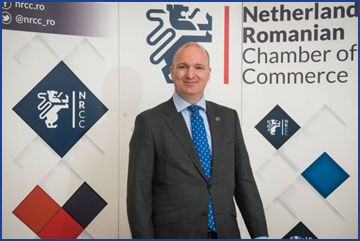 In terms of consolidating the business partnerships between the countries, we organize various events for the existing Dutch-Romanian business community. Our knowledge events serve to inform and support our members on current topics. Our networking events provide opportunities to meet each other and develop new business partnerships.
In terms of consolidating the business partnerships between the countries, we organize various events for the existing Dutch-Romanian business community. Our knowledge events serve to inform and support our members on current topics. Our networking events provide opportunities to meet each other and develop new business partnerships.
In Romania, the Dutch business community is very big compared to other countries from the region and it is a known fact that the Netherlands is the biggest source of foreign investments in Romania since many years now (NL accounts for 25 percent of the FDI in Romania according to National Bank of Romania in May 2017).
Today, the Dutch companies existing in Romania employ over 200.000 people, being both large corporations and small and medium sized companies or even individual entrepreneurs. This confirms the strong economic ties between the Netherlands and Romania. Moreover, the number of Dutch investors in Romania is expected to grow in the coming years, as we are seeing through NRCC studies and discussions with partners in NL.
Therefore, as you may know, on the 27th of April every year we celebrate our King Willem-Alexander birthday and we brought this celebration to Romania as well through our flagship yearly event NRCC Orange Night. This year it will be held on the 26th of April at Radisson Blu Bucharest together with Dutch-Romanian business community and our members. Through this event we strive to connect and link the two business communities in order for a long and great future collaboration.
King’s Day in Romania
Minister of Foreign Affairs H.E. Teodor Melescanu
Romania’s Ministry of Foreign Affairs: “Romania and the Netherlands share a valuable friendship, rooted in a solid economic cooperation, consolidated by our political dialogue and complemented by countless ties in areas such as education and culture”.
Koningsdag celebrates the birth of King Willem-Alexander, a day with symbolic meaning considering the profound respect and fondness the Dutch have for the Royal House. The National Day of the Kingdom of the Netherlands offers the Romanian Ministry of Foreign Affairs the great pleasure to convey the warmest congratulations and best wishes to the Dutch people.
The Netherlands brought a great contribution to the world’s cultural and historical patrimony, being the home country of remarkable personalities like Rembrandt, Vincent van Gogh, Piet Mondriaan, Erasmus and Spinoza.
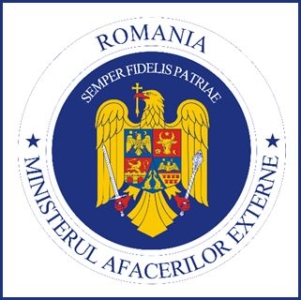 Romania and the Netherlands share a valuable friendship, rooted in a solid economic cooperation, consolidated by our political dialogue and complemented by countless ties in areas such as education and culture. The political and economic relations between Romania and the Netherlands developed in the last decade and we are constantly looking into ways of expanding them even further. The relations between our countries as member states of the European Union and NATO offers a privileged framework of further enhancement of our bilateral cooperation to a new level.
Romania and the Netherlands share a valuable friendship, rooted in a solid economic cooperation, consolidated by our political dialogue and complemented by countless ties in areas such as education and culture. The political and economic relations between Romania and the Netherlands developed in the last decade and we are constantly looking into ways of expanding them even further. The relations between our countries as member states of the European Union and NATO offers a privileged framework of further enhancement of our bilateral cooperation to a new level.
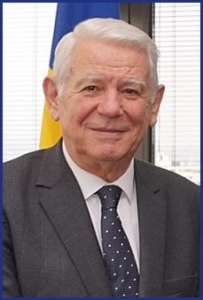 Dutch investments in Romania ranking first position with more than 9 billion Euro through more than 5000 companies stand proof of the solid economic ties between our two countries, but also of the profitability of the Romanian market. In 2017, the commercial exchanges reached more than 4 billion Euro, with a high perspective of growth. We welcome Dutch companies’ presence and international renewed know-how in areas of mutual interest such as agriculture, shipping, and water management.Our continent is facing multiple overlapping crises, which require increased cooperation between European countries. The European project came to life because visionary leaders came together and tackled the challenges Europe was facing at the time and thus ensured long-term peace. It is in this spirit that Romania will act during its Presidency of the European Council in 2019. We will focus on what unites us – shared values and principles – and will focus on ensuring immediate action.
Dutch investments in Romania ranking first position with more than 9 billion Euro through more than 5000 companies stand proof of the solid economic ties between our two countries, but also of the profitability of the Romanian market. In 2017, the commercial exchanges reached more than 4 billion Euro, with a high perspective of growth. We welcome Dutch companies’ presence and international renewed know-how in areas of mutual interest such as agriculture, shipping, and water management.Our continent is facing multiple overlapping crises, which require increased cooperation between European countries. The European project came to life because visionary leaders came together and tackled the challenges Europe was facing at the time and thus ensured long-term peace. It is in this spirit that Romania will act during its Presidency of the European Council in 2019. We will focus on what unites us – shared values and principles – and will focus on ensuring immediate action.
The strength of our relationship also derives from our nationals abroad – Romanians living, working and studying in the Netherlands and the Dutch living in Romania. The human connections between our countries, which found expression in countless projects, built real bridges between our countries.With confidence that we will deepen cooperation to ensure stability and prosperity in Europe, we once again extend our congratulations to the Dutch people.
Ambassador of the Netherlands H.E. Ms. Stella Ronner-Grubačić
We have a shared interest in making the EU an area of prosperity, stability, safety and well-being for all our citizens.
The national day of the Kingdom of the Netherlands is celebrated on 27 April, the day when King Willem-Alexander celebrates his birthday. Willem-Alexander was crowned the King of the Netherlands on 30 April 2013. Before that date, Dutch people were used to celebrating Queen’s day, because of the fact that we had Queen Beatrix, who succeeded her mother Queen Juliana and before her Queen Wilhelmina who acceded to the throne in 1890. So for almost 125 years, the head of state of the Netherlands was a woman. And the influence of women on Dutch state affairs does not end there, because King Willem-Alexander married Queen Máxima, a former investment banker but also the UN’s Special Advocate for Inclusive Finance, who is known world-wide for her tireless efforts to improve access to financial services for those in the world who are less fortunate and for whom access to small credits may be the first step out of poverty.
In Romania, a woman is in charge of the government for the first time in the history of this country. I met Madam Prime-Minister on March 12, for what may be considered part of the standard, diplomatic practice: the courtesy call that an Ambassador of a friendly country, partner in EU and NATO, pays to a newly appointed Prime-Minister. Except that it wasn’t! We had a substantive meeting, that lasted well over an hour, and our discussion ranged from the Dutch-Romanian partnership in the EU, via our dynamic economic cooperation, to difficult bilateral topics. And we agreed on pragmatic ways to intensify our relations and bring them to a higher level.
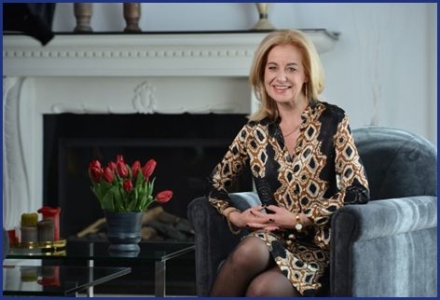
Since that first meeting, there have been two more meetings – each in the company of many other ambitious and dedicated women, ministers and ambassadors. And every time, our discussions have focused on concrete solutions to real problems of our societies, problems that the people in our two countries encounter in their everyday life.
Naturally, we have focused on the position of women. Starting from the awareness that global gender parity according to a recent publication by the World Economic Forum is still 170 years away. There is much to be done, which includes addressing the issue of violence against women- which is unfortunately still so present in today’s society. In Romania, almost one quarter of Romanian women between 18-74 experience physical and/or sexual violence at least once in the life by an intimate partner. Both Romania and the Netherlands have ratified the Istanbul Convention on combating violence against women, but from figures like these, we see that there is still work ahead. If we can move forward on issues such as this one together, that is to our mutual benefit. Because it is also clear that, in some areas, Romania can serve as an example to others, including the Netherlands. Such as is the case when we look at the gender pay gap. With a pay gap of only 6 pct, Romania is the European country that is doing best. In the Netherlands, women unfortunately still get paid on average 16 pct less for the same job.
In the meetings with the Prime Minister and many other women in leadership positions, it was decided that these and other inequalities are unacceptable in 2018. We looked at all the powerful women that we see, the talent that is available and we look at our own possibility of being role models, and reaching out to the younger generation, especially girls. And decided we wanted to get to work, using not only our strengths and capacities, but also the diversity of our respective societies, starting from different cultures, coming from a different history and located in different geographical positions.
The Netherlands and Romania are situated in different, almost opposed, corners of Europe. This partly explains why we hold sometimes different views on issues. But we are allies in NATO and partners in the EU. We have a shared interest in providing security in our and other parts of the world, in upholding the values that we have committed ourselves to and making the EU an area of prosperity, stability, safety and well-being for all our citizens.
When the Netherlands held the EU Presidency two years ago, our priorities naturally included the migration crisis, but also improving the functioning of the internal market (in the area of digital services), making our economies fully circular and introducing the Urban Agenda, enabling European cities to take part in European decision making, especially with the aim of making our cities more livable by making them smart. The Dutch Embassy in Bucharest, during our Presidency, has succeeded in undertaking several local activities to put our EU priorities in practice. For instance, we have embarked on an ambitious project in the framework of our focus on smart mobility, and recently an impressive number of Romanian mayors visited ‘smart city projects’ in the Netherlands, to witness what results can be achieved in different fields if one applies innovative techniques in sectors such as infrastructure, transportation or health care, but also if one aims at sustainable solutions for agriculture or waste management.
Very soon, on 1 January 2019, Romania will take over the Presidency of the European Council. A daunting task! Brexit will mean that EU member states need to carefully reflect on the EU’s strategic agenda for the years to come and the new budgetary cycle forces us to take decisions that may be painful. It places a great responsibility on Romania and its leadership. But of course, Romania can count on the support of its EU partners, the Netherlands being very much among those that are eager to see this country succeed its first EU Presidency.
I am looking forward to continued cooperation with our Romanian interlocutors on all these issues, and on all the possible levels. If we do this in an inclusive way, using also the unused potential of the many talented women in this country, we will certainly be able to move things forward. Thus, we ensure that pragmatic decisions are taken and that the interest of the future generations will be put in the first place.
Bucharest Mayor Gabriela Firea
Bucharest General Mayor Gabriela Firea participated on Thursday alongside Ambassador of the Netherlands in Bucharest Stella Ronner-Grubacic in the Floral Art Demonstration organized by the Embassy of the Netherlands in front of the Romanian Athenaeum, on the occasion of the National Day of the Netherlands, on which occasion the Mayor stated she wanted to have an extraordinary collaboration, on as many levels as possible, between Bucharest and Amsterdam.
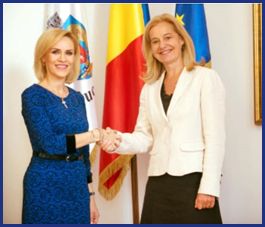 “We celebrate together, at the initiative of Her Excellency, Mrs. Ambassador Stella Ronner-Grubacic, the National Day of the Netherlands in the Centennial Year of Romania. We want to have an extraordinary collaboration, on as many levels as possible, both between our cities and countries. What I have discovered, when visiting the Netherlands, is the fact that flowers not only represent a business for this people, but the soul of every Dutch, because in any yard or balcony these flowers are cultivated and cared for with consideration and dedication. One cannot celebrate more a person, a city or a country than through love, empathy, art, and understanding of the problems,” Firea stated as quoted in a release of the Municipality.
“We celebrate together, at the initiative of Her Excellency, Mrs. Ambassador Stella Ronner-Grubacic, the National Day of the Netherlands in the Centennial Year of Romania. We want to have an extraordinary collaboration, on as many levels as possible, both between our cities and countries. What I have discovered, when visiting the Netherlands, is the fact that flowers not only represent a business for this people, but the soul of every Dutch, because in any yard or balcony these flowers are cultivated and cared for with consideration and dedication. One cannot celebrate more a person, a city or a country than through love, empathy, art, and understanding of the problems,” Firea stated as quoted in a release of the Municipality.
In her turn, Stella Ronner-Grubacic explained that the floral art demonstration outside the Romanian Athenaeum marks the beginning of the National Day of the Netherlands and the birthday of Willem-Alexander, King of the Netherlands.
She stated that the celebration of the National Day of the Netherlands through flowers has already become a tradition. This event wasn’t organised just because the Netherlands is the country of tulips, but out of the wish to show how flower business work in the Netherlands and how to professionalise this sector in Romania as well, the Ambassador added. She went on saying that this demonstration managed to practically combine the most important characteristics of our countries, namely the Romanian creativity and the Dutch sense of structure and coherence.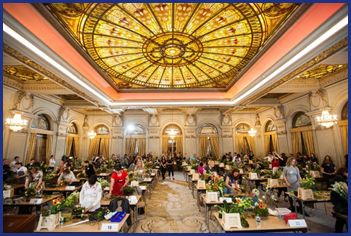
The Floral Art Demonstration was accompanied by violinist Cristian Balas’s music and it was put together by the renowned Dutch floral designer Dennis Kneepkens, while the arrangements made during the demonstration mark both the National Day of the Netherlands and the 100th anniversary of the Great Union of Romania, reads the release.
Disclaimer
De nieuwsbrief van het Dutch Romanian Network wordt met grote zorgvuldigheid samengesteld. Voor een mogelijke onjuistheid en/of onvolledigheid van de hierin verstrekte informatie kan het Dutch Romanian Network geen aansprakelijkheid aanvaarden, evenmin kunnen aan de inhoud van de nieuwsbrief rechten worden ontleend. De artikelen geven niet noodzakelijkerwijs de mening van het bestuur weer.
